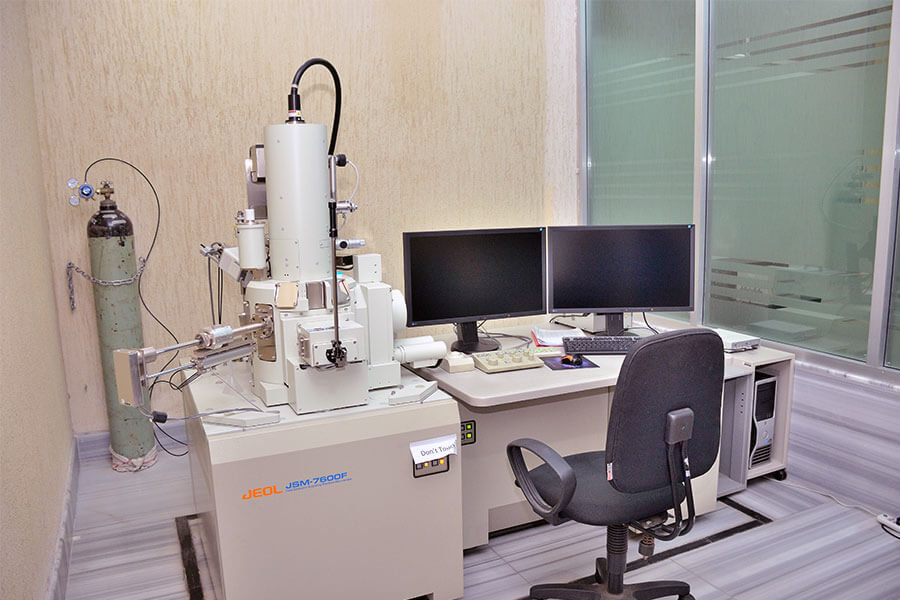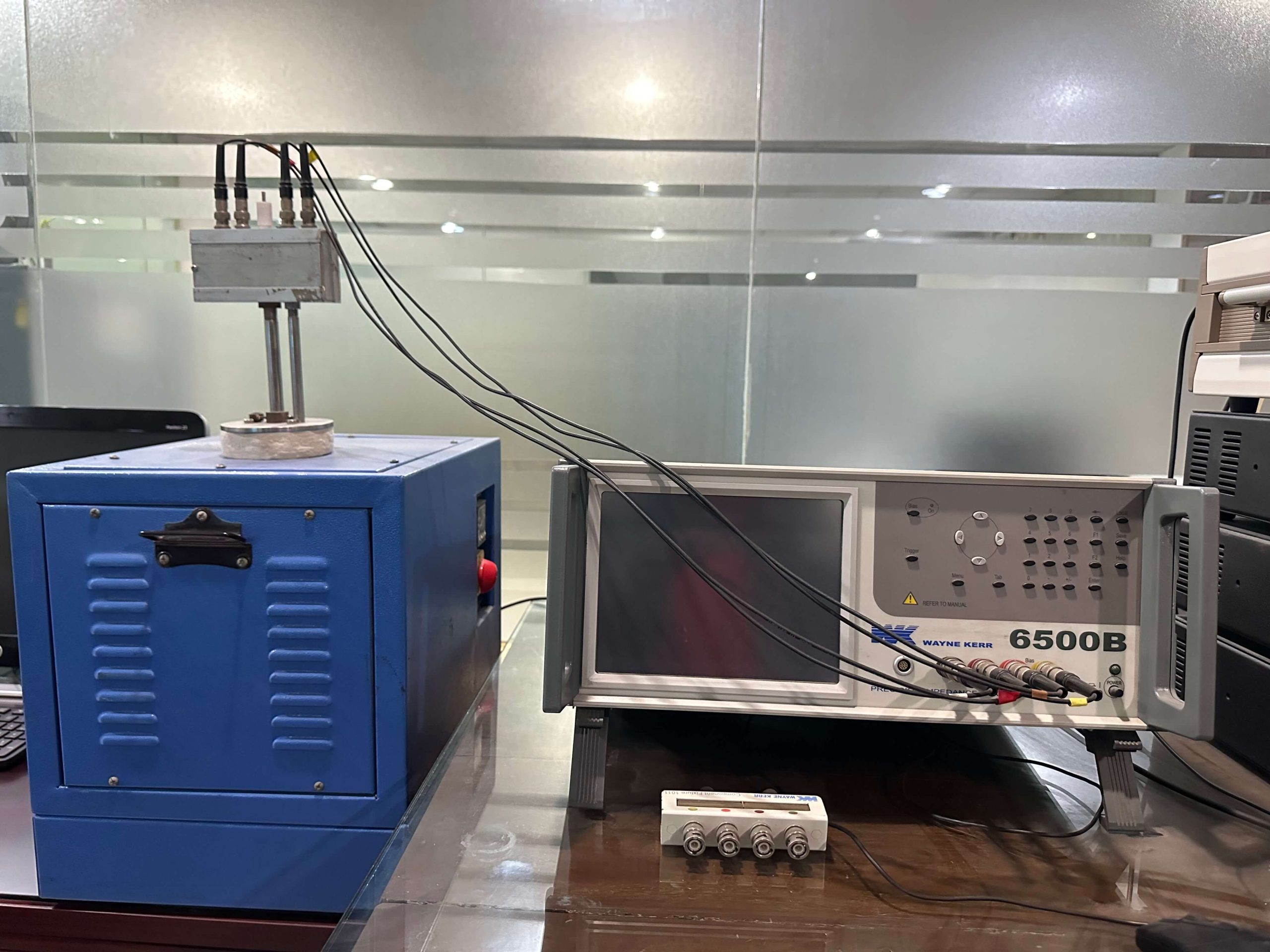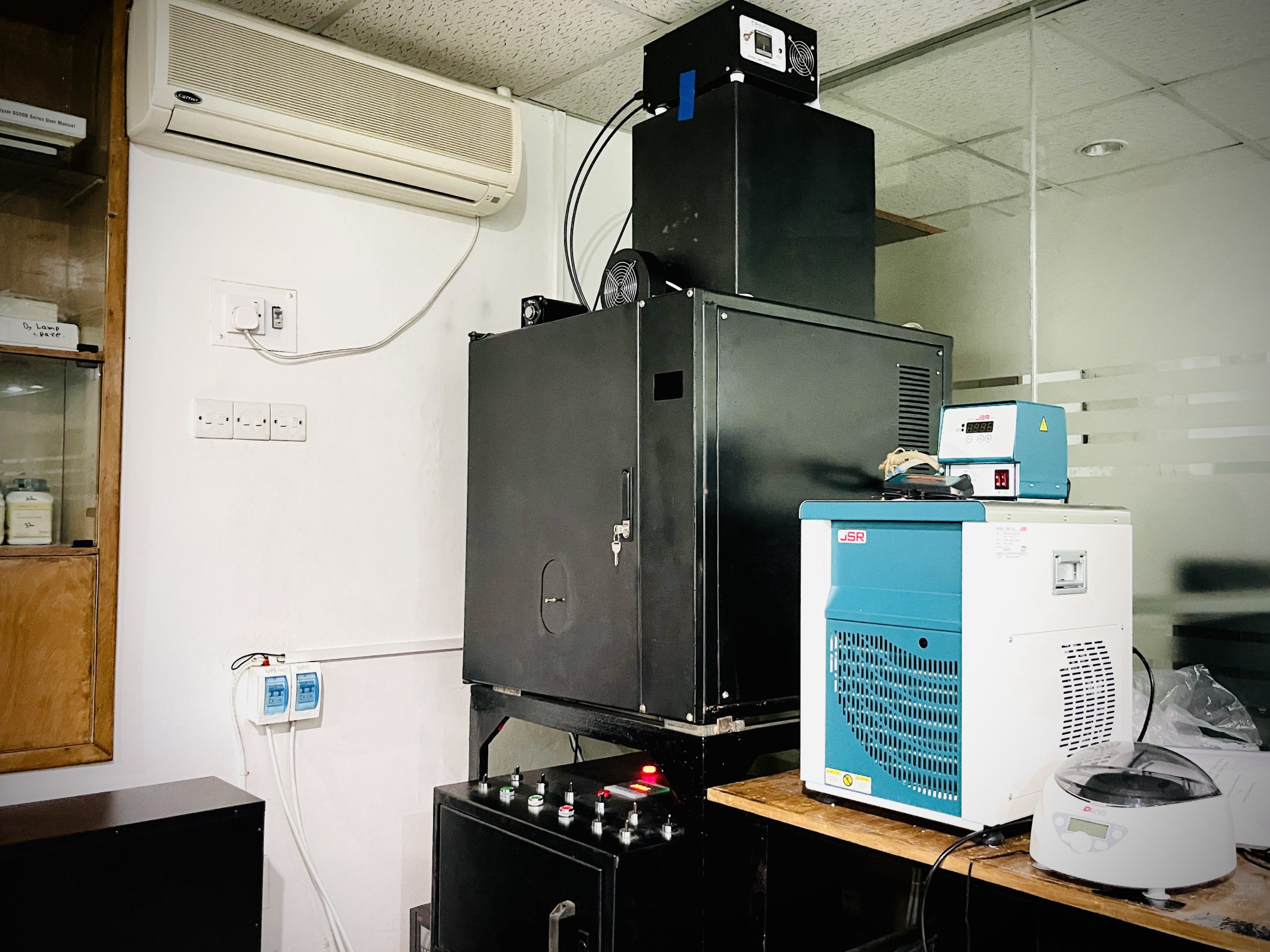Crystallinity, surface morphology and compositional analysis
X-Ray Diffraction Technique

X-ray diffraction (XRD) is a powerful nondestructive technique for characterizing crystalline materials. Our XRD (model: Empyrean, PANalytical-Netherlands) provides information on structures, phases, preferred crystal orientations (texture), strain, and other structural parameters, such as crystal size, crystallinity, and crystal defects.
Field Emission Scanning Electron Microscope (FESEM) with EDS attachment

NCE have a state-of-the-art FESEM (model: JSM 7600F, JEOL-Japan) at Electron Microscopy laboratory allowing topographical observation at nanometer scale resolution (1.4 nm). The equipment is also attached with EDS capable of elemental identification and mapping.
X-Ray Fluorescence (XRF) Spectroscopy

X-ray Fluorescence Spectroscopy (model: Lab Center XRF-1800, Shimadzu Japan) is a state-of-the-art analytical method to determine the chemical composition of all kind of materials in solid, liquid, and powder form. Using Certified Reference Materials (CRM), XRF gives highly accurate result in parts per million (ppm) levels, which is hard to achieve using wet method.
Electrical and optical characterization
UV/Vis/NIR Spectrometer

NCE has an advanced dual beam UV/Vis/NIR Spectrometer (model: LAMBDA 1050, PerkinElmer-USA) capable of performing quantitative analysis for the determination of diffuse and specular of any type of surface (glass, metal etc.), measurement of transmission and absorption of transparent/translucent solids and liquids.
Ferroelectric Measurement System

Precision Multiferroic test system (model: P-PMF, Radiant Tech. Inc.-USA) attached with 10 kV high voltage interface (model: P- HVi210KSC), amplifier (model: Trek 609B), and horizontal tube furnace (T max 1100 o C) to characterize the electrical properties of materials and devices. It can measure electric field, frequency and temperature dependent (up to 600 o C) electric polarization, capacitance, conductivity as well as magnetoelectric coupling of multiferroic bulk and thin film. In addition to that, PUND (Positive Up Negative Down), ferroelectric fatigue and imprint tests could also be performed adopting customized programs.
Impedance Analyzer

Wayne Kerr Series 6500B Precision Impedance Analyzer available at NCE provides precise and fast testing of components at frequencies up to 15 MHz and temperature up to 600 o C.
Photocatalytic Reactor

Photocatalytic Reactor is a device that performs the photocatalysis reaction. To Solve the purpose of the photocatalysis research NCE Department designed and developed this Photocatalytic reactor
Thermal characterization
Simultaneous Thermal Analysis
 Simultaneous Thermal Analysis generally refers to the simultaneous application of Thermogravimetry (TGA) and Differential Scanning Calorimetry (DSC) to one and the same sample in a single instrument. It combines a high-performance Heat Flux DSC with a sub microgram-resolution thermo balance, thereby offering an unmatched sample load and measurement range. The robust system setup, user friendly software and flexible design along with the wide range of different options make the system an ideal tool for quality control and research for material characterization.
Simultaneous Thermal Analysis generally refers to the simultaneous application of Thermogravimetry (TGA) and Differential Scanning Calorimetry (DSC) to one and the same sample in a single instrument. It combines a high-performance Heat Flux DSC with a sub microgram-resolution thermo balance, thereby offering an unmatched sample load and measurement range. The robust system setup, user friendly software and flexible design along with the wide range of different options make the system an ideal tool for quality control and research for material characterization.
Dilatometer
 Horizontal dilatometer offers state-of-the-art dilatometer technology and is manufactured for a wide range of sophisticated applications. It allows force modulation and, by this means, bridges the gap between dilatometry and thermomechanical analysis (TMA) under oscillatory load. It features the revolutionary Nano-Eye measuring cell; a new dimension in measuring range and accuracy. Due to the wide dynamic range of the measurement system, it is possible to measure both soft and hard samples without impairment of the properties.
Horizontal dilatometer offers state-of-the-art dilatometer technology and is manufactured for a wide range of sophisticated applications. It allows force modulation and, by this means, bridges the gap between dilatometry and thermomechanical analysis (TMA) under oscillatory load. It features the revolutionary Nano-Eye measuring cell; a new dimension in measuring range and accuracy. Due to the wide dynamic range of the measurement system, it is possible to measure both soft and hard samples without impairment of the properties.
